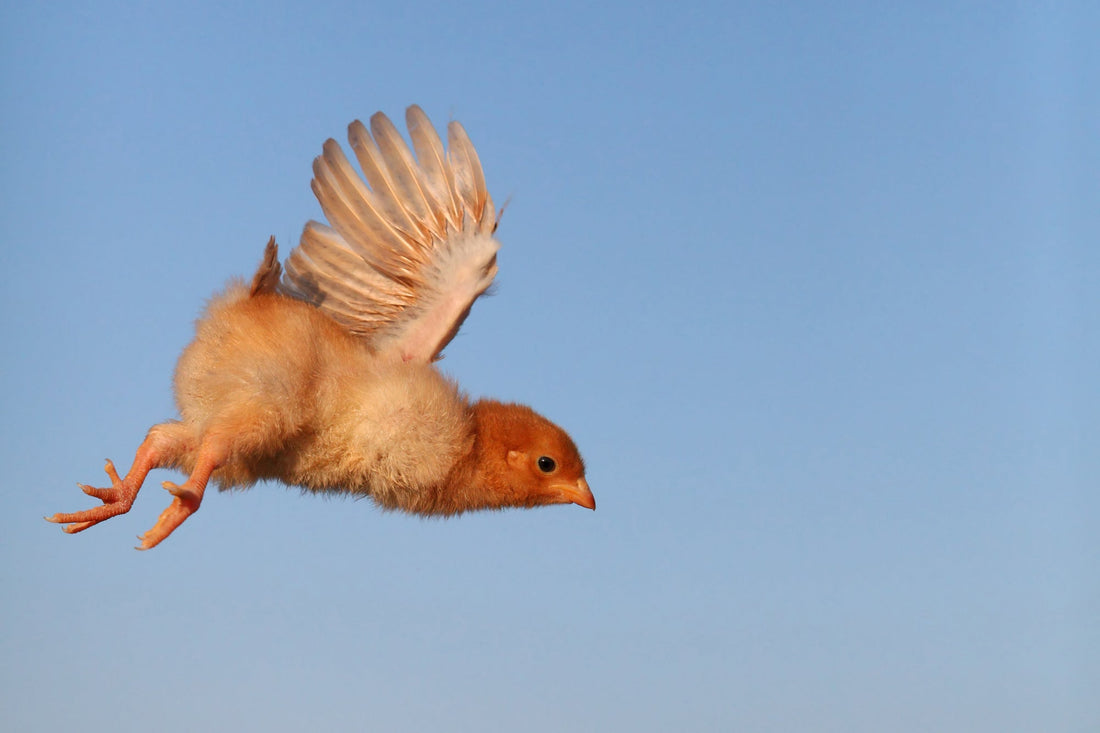Chickens are ubiquitous in our society, both as farm animals and as a culinary staple. But one question that has always intrigued many is - can chickens fly? The short answer is yes, but not in the way you might think. This blog delves deep into the world of chicken flight and examines some other flightless birds as well.
The Flight of Chickens
Evolutionary Background:
Chickens, as we know them today, are domesticated descendants of wild jungle fowls from Southeast Asia. Over thousands of years of domestication, chickens have been selectively bred for various traits, with flight not being a top priority. Thus, the wild ancestors of chickens could fly better than most modern chickens.
The Mechanics:
A chicken's flight is quite different from that of an eagle or a sparrow. While chickens do have wings and can flap them with considerable power, their body structure and weight prevent them from achieving sustained flight. Instead, chickens are capable of "fluttering" or short bursts of flight. This means they can fly over a fence or get to a low branch of a tree, but they won’t be crossing vast distances mid-air.
The reasons for this limited flight capability include:
- Weight: Domestic chickens, especially those bred for meat, are heavier than their wild counterparts.
- Wing Structure: The wing-to-body size ratio in chickens is not optimized for long flights.
- Muscle Composition: Birds that fly long distances have a higher proportion of slow-twitch muscles (endurance muscles), whereas chickens have a higher proportion of fast-twitch muscles (burst strength) suitable for short flights.
Other Flightless Birds
Chickens aren't the only birds that experience limitations in flight. Here's a closer look at some truly flightless birds and the reasons behind their inability to fly:
1. Ostriches:
The largest bird in the world, the ostrich, is native to Africa. Their size (up to 9 feet tall) and weight (up to 340 pounds) immediately rule out the possibility of flight. However, what they lack in flying capabilities, they make up for in speed, being able to run up to 45 mph.
2. Emus:
Native to Australia, emus are the second-largest birds after ostriches. Emus have a unique adaptation: their strong legs allow them to cover large distances in search of food and water.
3. Kiwis:
Native to New Zealand, these small, nocturnal birds have almost vestigial wings. They cannot fly at all. Interestingly, they have nostrils at the end of their long beaks, which they use to sniff out insects and worms.
4. Cassowaries:
Also from Australia, cassowaries are known for their striking blue and black coloration and helmet-like casques on their heads. These birds can be aggressive and possess strong legs that they use for defense.
5. Penguins:
While they can't fly in the air, penguins are adept swimmers, 'flying' underwater. Their flippers are adapted for swimming rather than flying, and their bodies are streamlined for movement in water.
Reasons for Flightlessness:
Birds lose their ability to fly for various reasons. Some common factors include:
- Evolutionary Pressure: On isolated islands where there are no land predators, birds don't need to fly to escape danger. Over time, they can lose this ability.
- Energy Conservation: Flying is energy-intensive. If food is scarce, it's more energy-efficient for a bird to walk or run.
- Adaptation: For some birds, like penguins, their environment offers more resources underwater. Thus, evolving towards better swimming capabilities and sacrificing flight is beneficial.
In Conclusion
While chickens can manage short bursts of flight, they're not about to join the ranks of migratory birds. Their evolutionary journey has prioritized other traits over the ability to fly long distances. Similarly, various birds around the world, whether due to their environment or evolutionary pressures, have evolved to prioritize other survival skills over flight.
It's a reminder of the incredible diversity of life on Earth. Each species has its unique set of adaptations, making it perfectly suited to its niche. Whether it's the lightning-fast run of an ostrich or the deep-sea dive of a penguin, each bird has its way of navigating the world – with or without flight.

